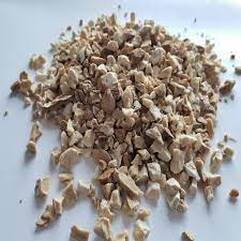|
Iris is not only very special for its olfactory quality. Did you know that the plant itself has been sacred for its healing properties ? by Françoise RAPP, IPF Chair France In natural perfumery, iris pallida is an exceptional ingredient to use to add a sophisticated note to formulations. What about its identity and above all, what does this treasure hidden underground reveal after a very long transformation for the pleasure of our nose and much more... Let's explore together this sacred and mythical plant that has existed since ancient times ... In Greek mythology, Iris daughter of Thaumas and Electra, was the messenger of the gods. In Homer's Iliad, she is "the messenger of all the eternal gods". When Hera returned from the Underworld to Olympus, it was Iris who purified her with perfumes. Poets claimed that the rainbow was the trace of Iris's foot descending rapidly from Olympus to earth to carry a message; this explains why it is most often represented with a rainbow. She is the rainbow goddess. Iris of Florence is recognized as one of the noblest members of the iris family by natural perfumers since Catherine of Medicis. As for the plant itself is concerned, for nearly a millennium in Egypt and then appreciated by Catherine de Medicis, it has been used in cosmetics and fragrant balms. And it still does nowadays. Botanically derived from the roots of iris germanica, the extract possesses a high concentration of isoflavones in its rhizomes. As a result, it is included in cosmetic formulations due to its potential to provide potent antioxidant effects that help protect the skin by neutralizing free radicals. In his Canon of Medicine, Avicenna recommends an external wash made from a decoction of orris root as a beautifier of the skin, which removes wrinkles. Iris grows in various countries now from France, China, Turkey, Italy and Morocco but iris pallida or iris of Florence is recognized as one of the noblest members of the iris family by natural perfumers since Catherine of Medicis. Technically, its cultivation is done from mid-September to mid-October. The harvest takes place the 3rd year after planting between mid-July and mid-August. The extraction is either done with a volatile solvent for the absolute (alcohol for the resinoid) or hydrodistillation as for the butter and irone isolate. In terms of the yield itself, it requires 100 kg of rhyzomes to make 1,2kg absolute, 100 kg for 20 kg resinoid and 330kg to make 1kg orris butter and 100 grams of isolates. We can definitely see the waste and non-sense of processing isolates for natural perfumery! Explore this classic and exceptional ingredient.
Its scent is multi-faceted with delicious notes between violet note and mimosa note, woody accents, light note of powdery leather and note of carrot. In fact, very often in perfumery, to replace or support the iris effect, carrot seed essence is added. Its fragrant quality is simply exceptional and it this explains why it was the star ingredient of famous classic sophisticated perfumes from the early 20th Century to now. It is synonym of chic and elegance for women and men as well. It blends beautifully with other essences to either make rich floral, woody or fougère accords. For instance, modern fougère natural fragrance can be created with lavender, vetiver, ambrette, iris and Virginia cedarwood; or the association with essences like benjoin, franckincense, ciste, tobacco and bergamot give it a very modern mystic flair. But more than that, iris is not only very special for its olfactory quality. Did you know that the plant itself has been sacred for its healing properties upon the body? Using natural essences affects definitely our body vitality and health. Since the earliest times, Egyptian then Greeks used iris rhizome powder for its cleansing and detoxifying properties. The juice of the fresh Orris root is said to be one of the finest natural remedies known for dropsy or edema, which is fluid retention. The finely powdered Orris root can be inhaled as snuff in pinch sized doses to provoke sneezing and thereby cleanse the head and sinuses. A decoction of Orris root attenuates and loosens up phlegm in the chest, lungs and throat for easy expectoration, and will soothe a sore throat and pacify coughing. Taken internally in small doses, Orris root will relieve congestion and sluggishness in the liver, have a carminative effect on the stomach and digestion, have a relaxing aperient laxative effect on the bowels, and will act as an emmenagogue to stimulate a sluggish or suppressed menstrual flow. Avicenna, the famous Greek doctor, recommends the external use of a boiled down decoction of the Orris root to treat and aid the maturation of chronic, hard swellings of the lymph glands and acne. He also recommends a concentrated decoction of the Iris leaves as a topical treatment for skin ulcers, preferably in conjunction with Rose oil. Avicenna also regards poultices of Orris root as a valuable antispasmodic in convulsed, spasmed muscles, and recommends an enema of Orris root to relieve pain and tenderness of the sciatic nerve. Explore this classic and exceptional ingredient. Try to formulate a delicately scented balm that will beautify the skin while delighting the senses.
3 Comments
|
Archives
October 2023
Categories
All
|






 RSS Feed
RSS Feed

